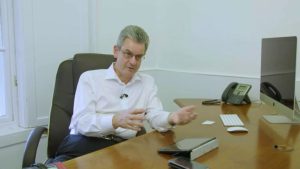Make Narcissist FEAR YOU: Abandonment Anxiety, Annihilation Dread (Twin Anxieties)
1. Introduction and Announcements
- Sam Vaknin introduces the topic of narcissist abandonment anxiety and how to leverage it to manage narcissistic abuse in toxic relationships. [00:00]
- Announces availability for paid consultations and free lectures in Paris. [00:20]
- Shares experiences with Wikipedia, describing vandalism of his page by a user and providing a link to a preserved version of his Wikipedia article. [00:35]
2. Central Question: Narcissist’s Fear of Abandonment vs. Devaluation and Discard
- A follower asks why narcissists have abandonment anxiety yet push people away through devaluation and discard, creating apparent contradiction. [03:10]
- Sam commits to addressing this question, explaining the narcissist’s twin anxieties and how to leverage abandonment anxiety in relationships. [03:45]
3. Narcissist’s Early Relationship with Maternal Figure
- Overview of the narcissist’s complicated relationship with the maternal figure (not necessarily biological mother) influencing narcissistic pathology. [06:20]
- Narcissist is terrified of abandonment stemming from this early dynamic; similar to borderline personality disorder’s abandonment anxiety but differs in nature. [07:55]
4. Nature of Abandonment Anxiety in Narcissists
- Narcissist experiences a generalized abandonment anxiety related to the collapse of shared fantasy essential for self-regulation and narcissistic supply. [09:30]
- This anxiety differs from specific abandonment fears seen in borderline personality disorder, being more about existential collapse than relationships with specific individuals. [10:50]
- Abandonment anxiety relates to narcissistic mortification and injury, reflecting the fragility of narcissist’s reality. [11:30]
5. Narcissist’s Idealization and Devaluation Phases
- Initial phase involves idealization of others as maternal objects, causing attachment and dread of abandonment from these idealized figures. [12:10]
- Later the narcissist devalues and discards these same people, transforming them from idealized to persecutory internal enemies, craving their abandonment instead. [12:55]
- Devaluation phase involves seeing the ex-partner or object as malicious, hostile, and a threat to the narcissist’s sense of self. [14:00]
6. Twin Anxieties of Narcissists and Borderlines
- Both narcissists and borderlines have twin anxieties: abandonment anxiety and annihilation/fear of engulfment but manifest and function differently. [15:30]
- Borderline behaviors are driven directly by anxiety, whereas narcissist behaviors are dictated by an uncontrollable algorithm of shared fantasy. [16:45]
7. Using Narcissist’s Abandonment Anxiety as a Tool
- During the idealization phase, threatening abandonment can change narcissist’s behavior rapidly due to their fear of loss. [18:30]
- This threat acts as a form of blackmail to negotiate boundaries, enforce limits, and reduce abusive behaviors. [19:00]
- In the devaluation phase, threatening abandonment energizes and empowers the narcissist, making them more aggressive and reckless, thus ineffective. [20:00]
8. Leveraging the Annihilation Anxiety in Devaluation Phase
- In the devaluation phase, narcissist fears the perceived power and malevolence of the devalued object (you) who is aggrandized as a powerful enemy. [22:15]
- Instead of threatening abandonment, hinting at the ability to damage, expose, or harm the narcissist (without crossing legal boundaries) is effective in modifying their behavior. [23:30]
- This use of implied threat causes the narcissist to recoil and reduce abuse. [24:20]
Conclusion
- The narcissist’s fear of abandonment and desire for discard are tied to different phases and perceptions (idealization vs devaluation).
- Understanding these dynamics allows victims to strategically use abandonment threats or implied abilities to protect themselves and negotiate with narcissists. [24:45]
All timestamps refer to approximate moments in the transcript where each topic is primarily discussed.






